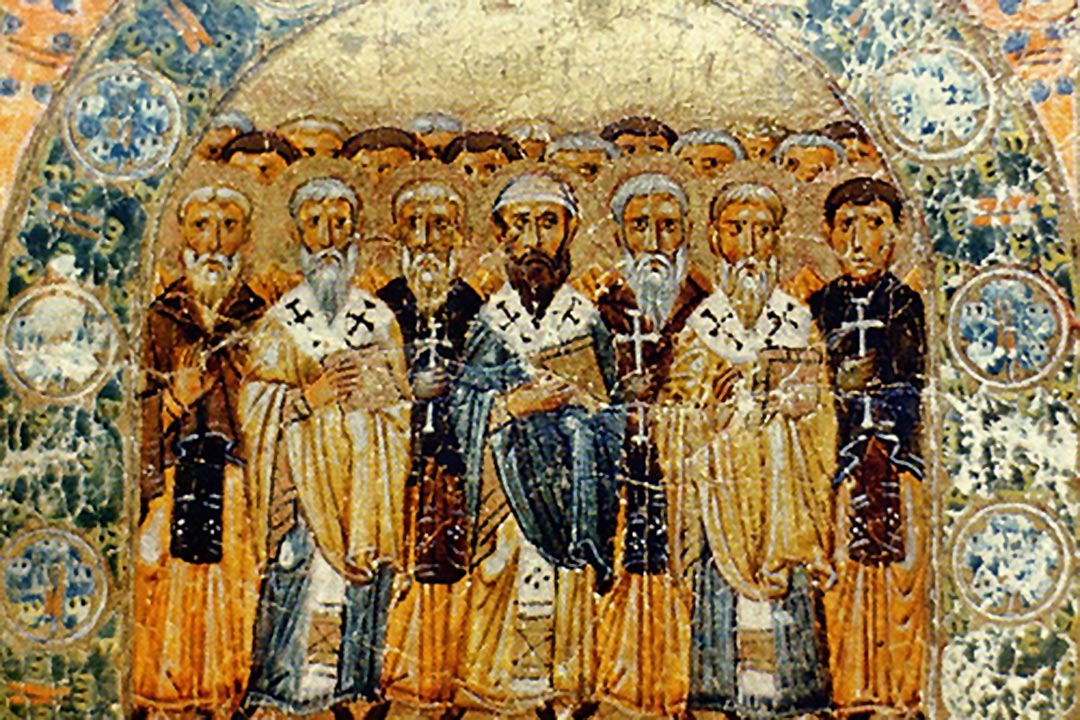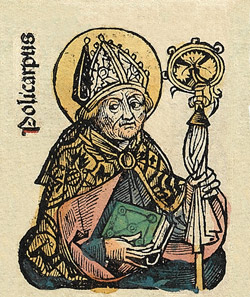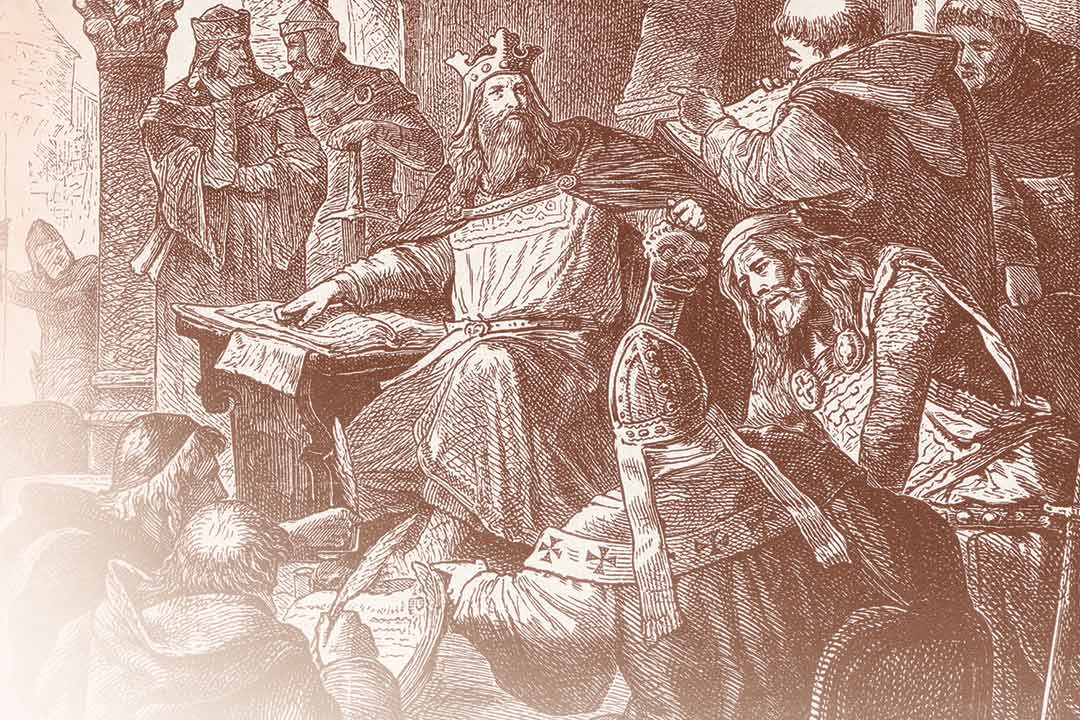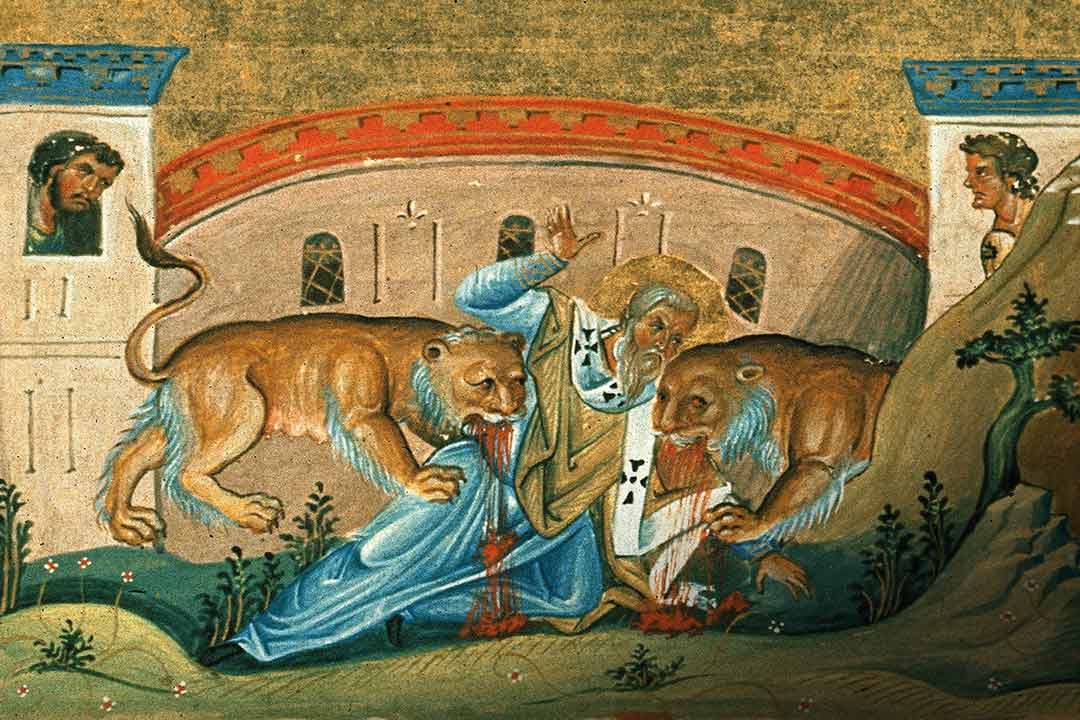From the Apostles to Reformation:When the Word of God Ceased to ExistPART III

The Pharisees by William Holman Hunt
Read the Other Parts of This Series:
· Part 1: The Power of God’s Word
· Part 2: The Rise and Fall of God’s Word
· Part 2: The Rise and Fall of God’s Word
For 40 days after his death and resurrection, Yeshua the Messiah encouraged, energized and taught those closest to Him and then left for heaven. Exactly 10 days later on the Jewish holiday of Shavuot (Pentecost), Yeshua sent the Holy Spirit in power to a gathering of 120 apostles and close associates of Yeshua who met on the second floor of someone’s house.
That day 3,000 Jews believed in Yeshua and received salvation. The thousands multiplied as the disciples crisscrossed the land of Israel, bringing the Good News to their countrymen everywhere.
Then a vision of all kinds of non-kosher animals appeared to Peter adding a new component, foretold by the prophets, but hidden from the Jewish people until that moment. Gentiles were no longer to be considered non-kosher. Each individual is created in the image of God and is valuable to God.
After all, the prophets had foreseen that Israel was to be a light to the Gentiles. And before Yeshua ascended into heaven, He commanded His disciples to bring the Gospel to “every person in all the world.”
Soon Paul, whose Hebrew name was Shaul, became the leader of the Jewish evangelists commissioned by God to reach the non-Jews. He began his ministry in Antioch, where Gentile believers were first called Christians.
Apostles Spread Out to Evangelize with The Old Testament Scrolls
Congregations of Jews and of Gentiles began to be planted around the known world. It is thought that Andrew went to Greece and Asia Minor. Tradition says Philip went to Hierapolis (Turkey) and archeologists recently claim they have found his tomb! Thomas was martyred in Persia or India. Judah is said to have evangelized in Armenia, Syria and Persia, where he, too, was martyred. Paul worked day and night for his Master, until he was most likely beheaded (usual punishment for a Roman citizen) in Rome around the time Peter was crucified.
The apostles had scrolls of the Old Testament in Greek as their source of Scripture. And with their personal first or second-hand witness of the risen Messiah, they were seeing growing crowds of pagans receive everlasting life.
Realizing how important the written word was for the growth of believers in Yeshua, the apostles created 27 books, all in Greek, to add to the Old Testament. This collection would come to be known as the books of the New Covenant – or New Testament. Though few people could read, they received the Word of God through their leaders in their house meetings, and the Body of believers grew.

Polycarp, early Church Father
Community Of Jewish Believers Disappears
For the first 40 years, the number of Yeshua’s Jewish followers in Judea, Samaria and Galilee, also grew, despite strong opposition of the Pharisees. But then, in 70 AD the Temple, Jerusalem, and for all practical purposes, the entire land of Israel was destroyed. Again the Jewish people were exiled, this time by the Roman Legions.
Before that horrific event, the Jewish followers of Yeshua fled to Petra, according to a tradition cited by fourth century Christian historian, Eusebius. Whatever may have happened, the Jewish followers of Yeshua as a community disappeared.
Throughout the centuries, there would always be a remnant of Jews who followed Yeshua. Nevertheless, the commandment to make disciples would now almost completely be carried out by the growing Gentile Christian community. This absence of Jewish presence in spreading the Gospel would slowly result in the absence of their role in church doctrine.
Godly Early Fathers Lead The Growing Church
There are well-known fathers among the early Christians who faithfully shepherded the flocks of new Christians. Men of faith like Clement of Rome and Polycarp of Smyrna – the latter, is recorded to have been a disciple of the Apostle John.
By the middle of the second century, the original disciples to the second and even third generation were gone. As the Gospel spread, the need arose for a version of the entire Bible in Latin (not just Greek) for the western regions of the empire.

Roman Emperor Nero (credit:Ghetty)
Persecution of Early Christians
Beginning in 64 AD, severe persecution began with Emperor Nero, and continued off and on with terrible atrocities against church leaders and Christians until 311 AD. Many of the Christian leaders were martyred – beheaded, crucified, burned or eaten alive by wild animals.
At times, whole communities were murdered. Even with all the persecution, the Church grew. By the year 300, Christians accounted for approximately 10% of the Roman population – some six million Christians, according to estimates.
From all reports, the great majority of Christians during the first 200 years were the real thing – including those who were later called popes and bishops. (It appears that leaders of Christian communities were called presbyters or bishops until somewhere around the middle of the second century, when the title “pope” in Rome was designated retroactively.)
Ancient Fragments Show Few Variations
During this time, countless numbers of scribes were copying the Word of God in Greek and Latin by hand, as the scrolls were distributed and shared from church to church. Then, around 320, the codex book form replaced the roll or scroll, making it easier to read and transport. The Word of God was circulating freely among believers.
There exist today 5,800 early copies and fragments in Greek, the original language. There are also another 8,000 in Latin. Moreover, there were scholars who translated the Bible into a few other languages, of which thousands of fragments still remain. Most errors of these early manuscripts were misspellings and copy errors. Only one to two percent of the differences can be seen as real differences, and none of them have any impact on doctrine.

Roman Emperor Constantine (Credit:Shutterstock)
Emperor Becomes a Christian
In the fourth century, everything changed. Christians saw the year 313 as a miracle year for the growing Gentile Church. The Emperor Constantine had a vision that transformed his life. Christianity became the dominant religion under the Emperor of the Roman Empire. Ten years later, he declared it the state religion. Persecution came to a halt.
Indeed, Constantine commissioned the historian Eusebius to deliver fifty Bibles to one church in Constantinople. He was serious about the Bible. Producing New Testaments and Bibles began in earnest – even though, we must remember, copying an entire Bible was still a huge undertaking.
However, with this copying and translation activity over a few hundred years, confusing variations of Scripture texts in Latin began to circulate throughout the early church. The great fifth century scholar, Jerome, who had a passion to get the pure and accurate Word of God into the hands of the people wrote, “Ignorance of the scriptures is ignorance of Christ.”
Jerome was commissioned by the pope to translate an official definitive Latin version, using the earliest copies. In his monastery in Bethlehem, he authored what is called the Vulgate, finished in 405. This became the official Bible used in Catholic churches to this day.
The work of copying the Scriptures continued to be undertaken in earnest in the monasteries of the early Middle Ages. Several thousand monasteries were established across Europe, and for many of the monks, making copies of the Scriptures was their chief task. They became the true guardians of the text and produced literally thousands of magnificent Bibles. Teams of scribes and artists worked with parchment to produce incredibly beautiful works of art. A scribe taking dictation might use as many as 80 quills a day, and artists embellished the work with intricate designs and illustrations.
Each Bible was made of sheep’s hide. It took 250 sheep and thousands of hours to make one Bible. In fact, a Catholic article states each Bible would be worth about $150,000 in today’s economy. Churches actually chained their Latin Bibles to tables so they would not be stolen.

St. Jerome in His Study (1480), by Domenico Ghirlandaio.
Western Roman Empire Collapses
Roman Emperor Constantine’s support had given the Church new strength. But when he moved his capital from Rome to Byzantium (which he renamed Constantinople in his honor) this move created a power vacuum in Rome that was quickly filled by a formidable line of popes who created a kind of “papal monarchy.” And then, in 476 AD, the Roman Empire in the west completely collapsed from a Barbarian invasion.
The popes and the bishops appropriated not only religious but also secular control over much of the old Roman world – with absolute governmental power to levy taxes, call up armies, make laws, and punish citizens who violated its laws.
As the Roman Empire dissolved, multiple regional languages developed. Latin became a dead language. This, of course, meant that huge populations no longer had access to the Scriptures in a language they could understand. Nevertheless, the Catholic Church continued to shepherd their flocks by conducting the Mass in unintelligible Latin or Greek.
Church Liturgy Replaces The Bible
The Church began creating its own literature of its traditions and practices, and then placed it on the same level of authority as the Bible itself. (This is exactly what the leading rabbis did when recording their traditions and interpretations of the Bible called the Talmud and Gemara. They declared that these rabbinical books have the same authority as the Bible.)
Gradually, the doctrinal teachings of the Church replaced the Bible. Since most people couldn’t read or write, the clergy was free to teach the Church’s version of religion and practices, no matter how unbiblical they became. Encapsulated Bible and traditional stories were passed down in oral form that could be easily memorized. Stained glass window pictures of the saints took the place of the Bible.
It became obvious to the popes in Rome that their constituents should not be trying to read the Bible at all. And so the decrees went out in the sixth century that only the Latin Bible could be read. Of course, nobody could read it. And the Church made sure they wouldn’t read it in any other language. The pope and his bishops forbade the translation of the Bible into any of the vernacular languages. The light on the hilltop went dark.
The Dark Ages
For 1,000 years, Christians were not allowed to read a Bible in their mother tongue.
This meant there were millions of Christians who had no direct access to the Bible.
But it was even worse than that. Jerome’s official Latin version (the Vulgate) had become corrupted with copiers inserting Catholic doctrine throughout the Scriptures they were copying. In the ninth century, Emperor Charlemagne made a serious and extensive attempt to get the best scholars to return the Vulgate to its original form. But his efforts would not find wide distribution.
As centuries went by, scholars were unable to discern the original Bible Scriptures from the interwoven Catholic teachings and interpretations.

Emperor Charlemagne with scholars and clerics.
Bible Plus
By the early fourteenth century, the condition of Jerome’s Vulgate was deplorable with all its added notes. Yet only a few of the most elite scholars were aware of it. It didn’t really matter as, has been said, the majority of lay citizens couldn’t understand it anyway. Just to make sure, in the thirteenth century, the pope proclaimed it illegal for lay members to even own a Bible in any other language, much less read one.
Christianity Becomes Pagan
Alongside the extreme lack of the Word of God among Christians, was another debilitating and destructive force that had been at work for centuries. When Constantine declared the Roman Empire a Christian state, millions of pagans joined the Church bringing their pagan gods and traditions with them.
Since millions of Catholic Christians had no way of knowing what the pure Word of God said, the popes and their bishops decided for them. Anti-Semitism was one of the earliest signs of anti-Bible doctrines that infiltrated and impregnated the Catholic Church.
The Scriptures had promised Abraham, “I will bless those who bless you and whoever curses you I will curse.” As the church gained power, it became standard practice to publicly curse the Jews:
John Chrysostom in the late fourth century delivered eight sermons of extreme violence. To quote him: “the synagogue is not only a brothel and a theater; it is also a den of robbers and a lodging for wild beasts. No Jew adores God… Jews are possessed by the devil, their debauchery and drunkenness gives them the manners of the pig…”
Augustine in his “Sermon against the Jews” declared that “though the [Jews] deserved the most severe punishment for having put Jesus to death, God kept them alive to be witnesses to the truth of Christianity.”
Even Jerome who translated the Vulgate Bible described the Jews as “…serpents, wearing the image of Judas, their psalms and prayers are the braying of donkeys.”
That hatred of the Jewish people poisoned the faith of the early church. Sin and pride brought not only doctrinal error, but anti-Biblical behavior. In a sentence, the Catholic Church disintegrated into heresy and corruption.
Martyrs, once loved by their contemporaries, now became the object of veneration and worship. The sheep left off praying to God and turned to praying to dead saints.

Painting of Ignatius of Antioch from the Menologion of Basil II (c. 1000 AD)
Hypocrisy from the top
Although the papacy banned marriage among the clergy, the popes, bishops and the majority of priests openly displayed their mistresses, concubines, wives, illegitimate children and homosexual orgies. They murdered, tortured and massacred their enemies. They created a hodgepodge of conflicting doctrines and ceremonies. Mary became the “Mother of God.” Statues and images of saints became an integral part of their worship. The Christians just changed the names of their erstwhile pagan gods to those of the saints.
Power and mammon corrupted the leadership. They learned to enrich their pockets by enticing the well-to-do and the poor to pay cash for their sins and the sins of their relatives, to be forgiven.
The popes sold ecclesiastical offices. Unqualified men purchased church offices, enriching the coffers of the feudal lord or king. Does that sound familiar? This is exactly the same practice that occurred during the late Maccabean period, when the wealthy Hellenistic Sadducees bought the offices of the High Priest and other important administrations.
No more evidence is needed to demonstrate that Gentiles could stray from the path just as the Jews did, as but for the grace of God, humanity always follows the same path towards power, greed and destruction.
The Dark Ages of ignorance and poverty and abuse enshrouded the people of the Middle Ages.
And the Word of God was hidden.
To be continued in the January 2020 Maoz Israel Report: The Reformation, Resurrection Power and the Printing Press
You can help Maoz translate the Word of God into a language modern Israelis can understand when you make a donation today.
Read the Other Parts of This Series:
· Part 1: The Power of God’s Word
· Part 2: The Rise and Fall of God’s Word